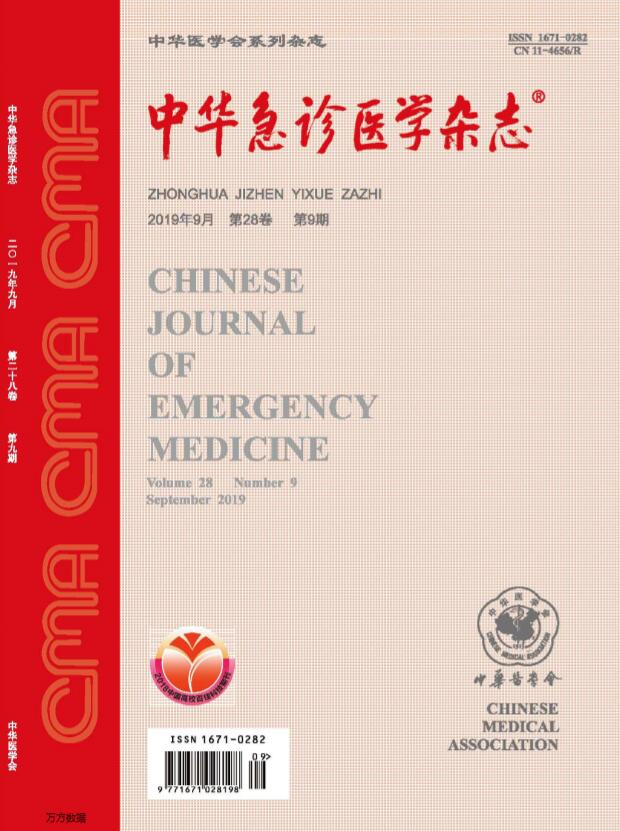2019冠状病毒病流行期发热门诊管理探讨
Q4 Nursing
引用次数: 2
摘要
目的探讨流行病学史在发热门诊2019冠状病毒病(COVID-19)筛查中的作用,提高发热门诊工作效率,降低交叉感染发生率。方法回顾性研究。2020年1月23日至2020年2月11日在四川大学华西医院发热门诊就诊的患者纳入本研究。根据流行病学史将患者分为有流行病学史组(实验组)和无流行病学史组(对照组)。两组患者分别入院治疗。比较两组患者的临床资料、NEWS评分、病因学结果、CT显示的病毒性肺炎、就诊时间、COVID-19患者比例、住院构成比例。计量资料以均数±标准差(SD)表示,计数资料以比值或构成比表示。两组间正态分布计量资料比较采用独立样本t检验。偏态分布的计量数据以中位数(四分位数间距)表示,两组间的比较采用非参数检验。计数资料间的差异采用卡方检验。p < 0.05)。实验组患者的年龄(35.00±12.80岁vs 38.13±15.57岁)、发热患者比例(28.80% vs 32.75%)、等待时间(31.72 vs 58.08 min)均低于对照组,差异有统计学意义(P 0.05)。结论2019冠状病毒病期间,有必要调整发热门诊管理模式,根据流行病学史对患者进行管理,以提高筛查效率,降低交叉感染风险。关键词:2019冠状病毒病;发烧门诊;管理;流行周期;流行病学历史;感染;纬向治疗;筛选本文章由计算机程序翻译,如有差异,请以英文原文为准。
Discussion on the Management of Fever Clinic during the Epidemic Period of Corona Virus Disease 2019
Objective
To investigate the role of epidemiological history in the screening of Corona Virus Disease 2019 (COVID-19) in fever clinic, to improve the efficiency in fever clinic and reduce the incidence of cross infection.
Methods
This is a retrospective study. Patients who were admitted to the fever clinic in West China Hospital of Sichuan University from January 23th, 2020 to February 11th, 2020 included the study. According to epidemiological history, the patients were divided into epidemiological history group (the experimental group) and no epidemiological history group (the control group). The two groups of patients were admitted and treated separately. The clinical data, NEWS score, etiology results, viral pneumonia showed on CT, time of visit, COVID-19 patient ratio, and admission composition ratio were compared between the two groups. The measurement data were presented as the mean ± standard deviation (SD), and the numeration data were expressed as ratio or constituent ratio. The measurement data of normal distribution between the two groups were compared by independent sample t test. The measurement data of skewed distribution are expressed by the median (interquartile range), and the comparison between the two groups is tested by non-parameter. The differences between enumeration data were assessed by chi-square test. A P<0.05 was considered statistically significant.
Results
A total of 2423 patients were included, including 927 patients in the experimental group and 1296 patients in the control group. There were no significant differences in gender, NEWS score and clinical symptoms between the two groups (P> 0.05). The age (35.00 ± 12.80 vs 38.13 ± 15.57 years) , the proportion of fever patients (28.80% vs 32.75%) and waiting time (31.72 vs 58.08 min) of the experimental group were lower than the control group, the difference was statistically significant (P 0.05).
Conclusion
It is necessary to adjust the management mode of fever clinic during the Corona Virus Disease 2019, and to manage the patients according to the epidemiological history which can improve the screening efficiency and reduce the risk of cross infection.
Key words:
Corona Virus Disease 2019; Fever clinic; Management; epidemic period; Epidemiological history; Infection; Zonal treatment; Screening
求助全文
通过发布文献求助,成功后即可免费获取论文全文。
去求助
来源期刊

中华急诊医学杂志
Nursing-Emergency Nursing
CiteScore
0.10
自引率
0.00%
发文量
8629
期刊介绍:
Chinese Journal of Emergency Medicine is the only national journal which represents the development of emergency medicine in China. The journal is supervised by China Association of Science and Technology, sponsored by Chinese Medical Association, and co-sponsored by Zhejiang University. The journal publishes original research articles dealing with all aspects of clinical practice and research in emergency medicine. The columns include Pre-Hospital Rescue, Emergency Care, Trauma, Resuscitation, Poisoning, Disaster Medicine, Continuing Education, etc. It has a wide coverage in China, and builds up communication with Hong Kong, Macao, Taiwan and international emergency medicine circles.
 求助内容:
求助内容: 应助结果提醒方式:
应助结果提醒方式:


